Frontier Centre for Public Policy
Canada’s Indigenous burial hoax is still very much alive
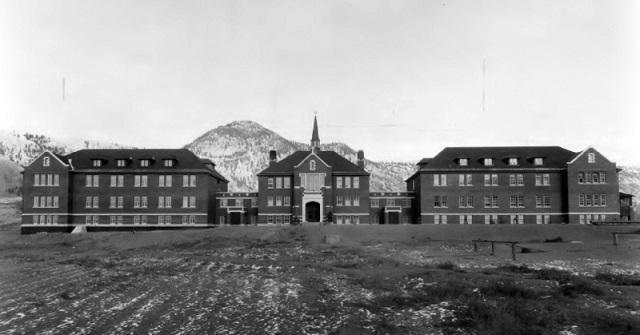
From the Frontier Centre for Public Policy
The Kamloops “confirmation” – growing more inconclusive all the time – consisted solely of signs of sub-surface soil irregularities: GPR cannot detect human or other organic material, and is only reliable in finding graves in known cemeteries.
History shows that many hoaxes, fake news stories, and conspiracy theories have proven nearly unassailable, even when proven false. So far, it seems a British Columbia burial canard will be added to this list.
The assertion that thousands of Indian Residential School children are buried in unmarked graves across the country, many of them victims of genocide, has been bandied about for decades. Its current promotion skyrocketed in mid-2021 following an Indigenous media release that was heard around the world:
May 27, 2021, Kamloops – It is with a heavy heart that Tk’emlúps te Secwé pemc Kukpi7 (Chief) Rosanne Casimir confirms an unthinkable loss that was spoken about but never documented by the Kamloops Indian Residential School. This past weekend, with the help of a ground penetrating radar (GPR) specialist, the stark truth of the preliminary findings came to light – the confirmation of the remains of 215 children who were students of the Kamloops Indian Residential School.
Although this claim and others like it are slowly being exposed as false, most Canadians still believe them.
This assertion is one of the findings of a February 2024 Macdonald-Laurier Institute research report that found “by a 79 to 21 ratio, respondents believed that ‘215 Indigenous residential school children were buried in a mass grave on school grounds in Kamloops, BC,’” a story lacking factual or historical evidence “but which most media and virtually all politicians have been reluctant to contradict.”
The Kamloops Burial Hoax
The Kamloops “confirmation” – growing more inconclusive all the time – consisted solely of signs of sub-surface soil irregularities: GPR cannot detect human or other organic material, and is only reliable in finding graves in known cemeteries.
Still, immediately following the Kamloops announcement, there were angry vigils, public displays of grief and shame, solidarity speeches, promises to revolutionize society, and the burning down of dozens of predominantly Roman Catholic churches.
The furore attending the Kamloops discovery accelerated as later findings were announced in other provinces, with the number of purportedly identified graves soon exceeding 2,000. Frequently heard among activists was the cry that these announcements were proof of a hidden “Holocaust” or “Final Solution” perpetrated against Aboriginal students by Canadians working in residential schools. The Kamloops school was alleged to have been a “concentration camp” and the 2021 “burials” evidence that there had been a horrific crime.
Evidence Challenging the Hoax
Entrenched public opinion on what increasingly looks like a burial hoax was damaged on August 18, 2023, when the 14 closely spaced soil disturbances detected using GPR in the basement of the Roman Catholic church on the site of the former Pine Creek Residential School were found to contain animal bones and debris, not human remains.
These findings were preceded by several other inconclusive discoveries.
In August 2021, a team of researchers in Shubenacadie, Nova Scotia, conducted an excavation at the former Shubenacadie Residential School in search of clandestine burials, but to no avail. Two months later, a search was conducted for unmarked graves on the site of the former Camsell Indian Hospital in Edmonton. The facility treated Indigenous people, many of whom suffered from tuberculosis, and some Indigenous leaders claimed that the dig would uncover patients that had been buried there, but no such evidence was discovered.
One discovery still making headlines is the unearthing of child-sized skeletons in a reputed “mass grave,” most likely the result of repeated accidental excavation and haphazard reburial by community grave diggers in the community cemetery on Alberta’s Saddle Lake Cree Indian Reserve. Without a shred of evidence, community members have attributed the death of some of these children to murder at the hands of a school official that was never reported to the police.
That there are no missing or secretly buried students who attended the reserve’s Indian Residential School is proven by the absence of relatives in the past or present searching for loved ones who never returned home. By comparison, in all of Canada, only two distant relatives have been identified as looking for their ancestors. In both cases, the children’s death certificates were found “buried” in the provincial archives whose records showed they were buried correctly on their home reserves.
Two easily located students’ records are surely vastly different from the “15,000 to 25,000 … maybe even more” children Murray Sinclair, former Chair of the Truth and Reconciliation Commission of Canada, has claimed may be missing.
It is becoming increasingly clear that the Kamloops claim, and the many copycat allegations it fomented, are fallacious. More commentators are awaking to the “mass grave” propaganda, even though the Canadian mainstream media barely responded to the Pine Creek discovery of presumptive graves containing no human remains, an important reason this hoax is still very much alive.
Indigenous Elites Support the Hoax
Among the most prominent of many Indigenous perpetrators of these inflammatory claims of murder, mass graves, and even genocide has been RoseAnne Archibald, former National Chief of the Assembly of First Nations, Canada’s largest and best-known Indigenous lobbying group.
At a July 15, 2021, Kamloops Indian Band public presentation, Archibald maintained that the Kamloops case told the world “how 215 innocent children died and were buried in unmarked graves” and that this “crime against humanity” constituted “genocide.”
Completely ignoring the caution of all the known researchers conducting these band-sponsored GPR searches, Archibald added that “this ground penetrating technology is revealing evidence, undisputable proof, that crimes were committed.”
In an interview broadcast by the BBC on August 4, 2021, Archibald charged that Canada’s Indian Residential Schools were “designed to kill” Indigenous children. “And we are seeing proof of that,” she said. “1,600 children, innocent children, have been recovered so far…. We are going to be in the thousands upon tens of thousands of children found. I am not sure how you can say that the recovery of that many little children does not signify what it is – genocide.”
Chief Archibald failed to mention that not a single child’s body “has been recovered so far” or that three years later, no bodies have been exhumed.
A lack of verified evidence of children buried in unmarked graves, some supposedly after priests murdered them, has done nothing to deter the federal government from funding several lavish programmes meant to continue this effort. One of these initiatives was the August 10, 2021, announcement of the allocation of $321 million to help Indigenous communities search burial sites at former residential schools and to support survivors and their communities.
Such programmes have doubtless hardened the public opinion expressed in the Macdonald-Laurier Institute poll. Allied beliefs discovered by the study are also at work: 54 percent of all respondents consider the legacy of Indigenous colonialization to be a problem today; 55 percent vs. 45 percent believe that Indigenous peoples should have a unique status because they were here first; by 48 percent for to 41 percent against, Canadians believe the harm from Indigenous residential schools will continue rather than be resolved; and 19 percent of Canadians think children at residential schools were “purposefully killed” with another 39 percent saying that children also died of neglect.
But the most critical determinant of the exceptionally high belief in the “killing field” at the Kamloops residential school lies in “political culture in Canada,” according to the study: “Much seems to come down to the culturally left-liberal political culture in Canada. That is, the elite norms that hold sway in the media and among mainstream politicians are predominantly culturally leftist.”
As the report says: “It is well established that the media and politicians can cue the issues they want voters to focus on, making decisions to elevate some questions and ignore others.”
This obvious assertion allowed the Macdonald-Laurier Institute report to argue that:
Canadians’ relatively high trust in institutions and cultural elites grants considerable latitude to them to frame the issues that people talk about while neglecting other questions…. There is no better illustration of this than the Kamloops mass graves question, where the code of silence practiced by the media and mainstream political parties has resulted in a clear majority of the public believing this false account.
On the Indigenous side, the Kamloops discovery, and its promise of lots of money, quickly unleashed a flood of similar GPR searches across Canada. To date, the unmarked graves are presumed to hold the remains of mainly unknown and unaccounted for individuals, primarily children, at 26 sites that have been identified since 1974[RC1] .
The allocation of funds to search for graves was followed in June 2022 by appointing an investigator to work with Indigenous communities and the government to propose changes in federal laws, policies, and practices related to unmarked graves at residential schools.
Kimberly Murray, former Executive Director of the Truth and Reconciliation Commission of Canada, was given a two-year appointment as Canada’s “independent special interlocutor for missing children, unmarked graves, and burial sites associated with the Indian Residential Schools.”
Murray’s appointment was simply one part of a campaign, whether deliberately organized or not, to label Canada as a genocidal country long engaged in the systematic murder of Indigenous children whose remains were dumped into mass graves.
Attempts to Stop Hoax Challengers
On June 16, 2023, Murray released an interim report arguing “urgent consideration” should be given to legal mechanisms to combat what activists have termed “residential school denialism.”
Unsurprisingly, her “opening words” in the report stated:
… my role is to give voice to the children. It is not to be neutral or objective – it is to be a fierce and fearless advocate to ensure that the bodies and Spirits of the missing children are treated with the care, respect, and dignity that they deserve” even if that “conflicts with my responsibility to function independently and impartially, in a non-partisan and transparent way.
This attack on the fundamental precepts of objective search for truth based on reason, logic, and scientific evidence rooted in a scientific paradigm that clashes with Indigenous ways of knowing gave her leave to label genocide denial as an “attack” on her version of the truth whenever there were announcements of the discovery of possible unmarked graves.
Moral certainty based on Indigenous ways of knowing, not objective evidence based on science, allowed Kimberly Murray to state that the Canadian government has a role in combatting “denialism,” an inflammatory distortion of what is simply scientific scrutiny, by giving “urgent consideration” to the legal tools that already exist to address the problem, including civil and criminal sanctions.
“They have the evidence. The photos of burials. The records that prove that kids died. It is on their shoulders,” Murray told a crowd gathered on the Cowessess Indian Reserve in Saskatchewan on June 16, 2023.
But there is no photographic evidence of children buried beside the shuttered Kamloops Indian Residential School nor at any of the other former Indigenous schools in Canada.
The only photographic evidence shows typical church burials and thousands of schoolchildren engaged in everyday activities. As for the records, they reveal that the few residential school children who died at the schools were buried in school cemeteries beside school staff members or the nearest reserve cemetery. But most deceased children were interred on their home reserves. All of them received a proper Christian burial after they died, most succumbing to contagious diseases like tuberculosis over which Indigenous people had little natural immunity.
Several of those labelled denialists have argued that there are few missing students, only missing records about their school attendance and death. On March 21, 2023, Murray inadvertently confirmed this assertion in her testimony before the federal government’s Standing Senate Committee on Indigenous Peoples when she said:
The family doesn’t know where their loved one is buried. They were taken to a sanatorium, an Indian residential school. They were just told … that they died. I can get the name of that [missing] individual, I can log into the National Centre for Truth and Reconciliation, find the name of the student, find a record, which will lead me down to another record, which will lead me to Ancestry.com. Why are families having to go to my office to find the death certificate of their loved one on Ancestry.com when the provinces and territories won’t just provide those records?
And then those records will lead you to where they’re buried, hundreds of miles away from their home community. We are now seeing families going to cemeteries. I get this a lot. The children aren’t missing; they’re buried in the cemeteries. They’re missing because the families were never told where they’re buried. Every Indigenous family needs to know where their child is buried. When we find that, and we know that they’re going to have a little bit of closure now, they know the truth and they have some answers, that’s what keeps us going. [emphasis added].
Even though there is little evidence that thousands of children’s deaths were not reported to their parents, and lots of evidence that this is not true, including the refusal of the National Centre for Truth and Reconciliation to remove the names of children whose cause of death and place of burial have been found, from its Memorial Register, a list now totalling over 4,100 named and unnamed “children who never returned home from residential schools.”
Murray’s statement contradicts the established public narrative about missing children. None of these facts have ever been communicated to the public by the mainstream media.
The latest anti-denial effort emanated from the Canadian Senate Standing Committee on Indigenous Peoples, which released a 30-page report on July 19, 2023, titled “Honouring the Children Who Never Came Home: Truth, Education and Reconciliation.” The study recommends “that the Government of Canada take every action necessary to combat the rise of residential school denialism.”
According to lawyer John Carpay, president of the Justice Centre for Constitutional Freedoms:
The use of state resources to promote one opinion on a scientific or historical matter is nakedly totalitarian. Apart from that, the senators’ aggressive language calling on government to “take every action necessary” suggests that it would be okay for the government to punish the likes of Michelle Stirling, Mark DeWolf, and others who dare to disagree with the dominant narrative.
The report fails to define “denialism” yet claims it “serves to distract people from the horrific consequences of Residential Schools and the realities of missing children, burials, and unmarked graves.” This omission suggests that “denialism” means disagreeing with the dominant narrative that Indian Residential Schools were houses of horror marked by racism and genocide.
Decades of an Aboriginal blood libel assertions hang over all these claims, with an army of activists and their supporters acting as its eager propagandists. It is long past time to find the underlying cause of this fake news by exhuming the reputed unmarked graves and identifying any remains they might contain. If that never happens, Canadians will be paying vast amounts forever to keep this hoax about missing and murdered Indigenous children alive.
Hymie Rubenstein is editor of REAL Indigenous Report and a retired professor of anthropology, the University of Manitoba.
COVID-19
Peckford: Hallelujah! Supreme Court of Canada to hear Newfoundland and Labrador charter case

From the Frontier Centre for Public Policy
This will allow the SCC to address novel questions about the scope of mobility rights in Canada and the extent to which the government can limit Canadians’ rights to move freely around the country.
In what can only be considered a surprise move the SCC has agreed to hear an appeal of a decision of the Supreme Court of Newfoundland. Surprise because the Newfoundland and Labrador Court of Appeal refused to hear the appeal of this exact case.
For the Appeal Court it was the all too familiar excuse of the whole thing being too moot for the Court.
But now the SCC has agreed to hear the case. The parties, Kimberly Taylor and The Canadian Civil Liberties Association appealed to the court.
Here is a copy of the Civil Liberties Press Release dated April 26, 2024:
“Arbitrary travel restrictions infringe on the mobility rights of Canadians. CCLA’s challenge of Newfoundland government’s Bill 38 will continue before the Supreme Court of Canada (SCC), so that Canadians have clear, predictable, and stable answers to fundamental questions affecting their basic mobility rights.”
Back in May 2020, CCLA challenged the constitutionality of the Newfoundland government’s Bill 38 before the province’s Supreme Court. This Bill provided for a travel ban between provinces and other restrictive measures in the context of the COVID-19 pandemic. CCLA asked the Court to declare Bill 38 in violation of s.6 (mobility rights), as well as other Charter rights. CCLA also argued that the law could not be saved by s.1, which says that limits on rights must be reasonable and demonstrably justified. In September of 2020, the province’s Supreme Court found that the travel ban did violate the s.6 Charter right to mobility, but that such infringement could be justified under s.1. CCLA pursued this case before the Newfoundland and Labrador Court of Appeal. In August of 2023, the Court of Appeal refused to settle the merits of the appeal under the motive that it was moot, since the ban had been lifted. This was done despite all the parties urging the Court of Appeal to decide the appeal on the merits.
CCLA is pleased to learn that the SCC just granted its application seeking leave to appeal in this case. This will allow the SCC to address novel questions about the scope of mobility rights in Canada and the extent to which the government can limit Canadians’ rights to move freely around the country. CCLA is grateful for the excellent pro bono work of Paul Pape, Shantona Chaudhury and Mitchell McGowan from Pape Chaudry LLP in this file.”
Like the Association I am pleased that the highest court is going to hear the case. One can only assume that it will not just issue a silly moot decision given that they could have let the Court of Appeal decision of Newfoundland stand and not hear the case.
I hope the highest court considers the following given it is high time for the Constitution of This Country to be fairly applied and interpreted as written.
Courts have not the power to rewrite this sacred document. They are not omnipotent. That is for the people through its elected representatives as expressed in Section 38 of the Constitution Act 1982 in which the Charter is located—the Amending Formula.
The intent of Section 1 Of the Charter was that it could only be applied in a war, insurrection, the state being threatened circumstance. As one of the First Ministers involved and whose signature is on the original Patriation Agreement I submit this point of view was what was operative at the time of the construction of this section. All remaining First Ministers whose names are on that document are no longer with us. Sadly, no court has called me to provide my view.
This intent is clear In Section 4 (2) of the Charter:
“In time of real or apprehended war, invasion or insurrection, a House of Commons may be continued by Parliament and a legislative assembly may be continued by the legislature beyond five years if such continuation is not opposed by the votes of more than one-third of the members of the House of Commons or the legislative assembly, as the case may be.”
So, decisions that have been made concerning the Charter should only be made in this context. Numerous court deliberations here and in many western jurisdictions have considered intent in determining the legitimacy of legislation. This is not novel or new.
Hence, a glaring, fundamental mistake has occurred in interpreting our Charter. The blatant omission of considering the opening words of the Charter in any interpretation of legislation by the Courts is an abuse of the Charter, our Constitution. Where is the power provided the courts to engage is such omission? Those words are:
“Whereas Canada is founded upon principles that recognize the supremacy of God and the rule of law:”
The one reference of which I am aware in the Courts literature to any consideration of the opening words relating to God was by an Alberta Judge in a lower court foolishly indicated that the creators of the words did not identify God as being a Christian God. All the creators, the First Ministers, were Christians —that’s all. What an insult to our history and traditions and the authors?
And this has been allowed to stand?
And what about the rule of law? Little if anything has been done in considering and interpreting this point.
As for Section 1 itself of the Charter. If one can get past the previous points, which is impossible, but let’s speculate: the court in question in Newfoundland, like the courts across the land, have disfigured, misinterpreted the wording of this section —-
Rights and freedoms in Canada
The Canadian Charter of Rights and Freedoms guarantees the rights and freedoms set out in it subject only to such reasonable limits prescribed by law as can be demonstrably justified in a free and democratic society.
What is of crucial importance is ‘demonstrably justify ‘and a free and democratic society ‘—-is it not? Many try and evade confronting these concepts by emphasizing ‘reasonable ‘. But ‘reasonable ‘is qualified, if you will, with ‘as can be demonstrably justified ‘and ‘in a free and democratic society.’ This was deliberate by the creators and authors of this section.
So, as we all know such reasonable demonstration would be a cost benefit analysis, a tool used frequently by Government in considering new policies or programs —and this case especially when sacred rights enshrined in the constitution were to be taken way!!! Yet, there was none! And what about the Provincial Emergency Management organizations that were already established in all the provinces with immediate expertise. Were they consulted? Not one!
No such attempt was made, and the Governments did not conduct even a cursory cost benefit review and the courts eagerly accepted the one-sided Government narrative. Yet experts like Lt. Colonel David Redman, who had been involved in Emergency Management and had written extensively on it were never consulted!
And ‘free and democratic society? Was there any meaningful engagement of the Parliament of Canada or the Legislative Assemblies —-not really, ——only to delegate power to unelected bureaucrats and relieve the politicians of direct responsibility. Where were the Parliamentary Committees? The sober consideration of all points of view in an open public session? Of independent science? Does not free and democratic society entail such deliberations?
And to those courts / governments who talk about little time—in this Newfoundland case it was 6 months before The Supreme Court of the Province ruled and 15 months for the Court of Appeal to issue a non-decision! So much for serving the people!
As for the concept of ‘mootness ‘that has been most dramatically used by the Federal Court and the Federal Court of Appeal and The Court of Appeal in Newfoundland? This is a construct of the court not the Constitution.
It denies a citizen the right to know whether a government action to which a citizen was subjected violates the Charter. Should a court idea of mootness, refusing to rule on whether a government action of only months before overruling the people’s right to know if their rights and freedoms were violated? Is this not the role of the Court? To protect the rights and freedoms of the citizens from Government overreach? That was and is the whole point of the Charter.
Whether the Government action is presently operative or not should be irrelevant, especially when millions of citizens were involved and especially when it involved rights and freedoms protected under the Charter, our Constitution. There may be a role for mootness if a frivolous matter is established but by any measure what we are discussing is anything but a frivolous matter, even though The Newfoundland Court of Appeal in calling the whole thing ‘moot ‘had the gall to find the Government’s action of denying rights ‘fleeting.’ Courts have abdicated their solemn responsibilities to the people in the exaggerated use of such Court constructed procedures.
So the highest court can go back to ‘first principles’, and examine intent and the opening words of the Charter and place them in full context in any interpretation of the Charter. If this were done then Section 1 of the Charter would not even be in play. Constructing a hypothetical i.e. considering Section 1 of the Charter during the so called ‘covid emergency’, well, even if we do, the Government and Court reasoning would have failed as demonstrated above.
There is an opportunity through this case as well as the one in which I am involved for our highest court to get it right——to return to the full constitution and re-establish the ‘supremacy of God and the rule of law, ‘the legitimate role of Parliament, to the plain meaning of demonstrably justify, and the importance of intent in interpreting our Charter.
Is the Supreme Court of Canada up to the challenge?
Will our Constitution, our democracy be restored?
The Honourable A. Brian Peckford P.C. is the last living First Minister who helped craft the Canadian Charter of Rights
Watch – Leaders on the Frontier: Brian Peckford on Saving Canada’s Democracy | Frontier Centre For Public Policy (fcpp.org) January 20, 2022
Frontier Centre for Public Policy
How much do today’s immigrants help Canada?
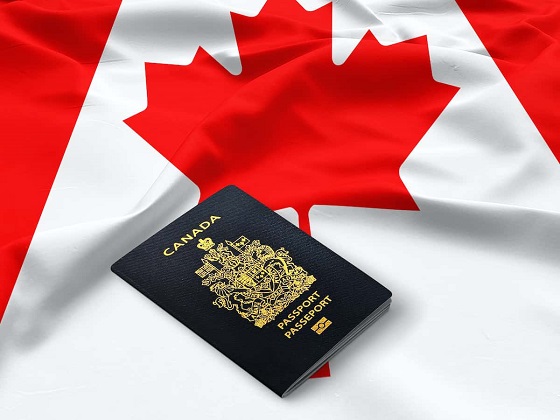
From the Frontier Centre for Public Policy
Newly arriving immigrants require housing, infrastructure and services right away. But even including other construction workers with the 2 percent who are qualified, working-age artisans, immigrants don’t come close to building the housing they occupy. Along with paying taxes to support new arrivals, oppressive housing and living costs then deter procreation for many would-be parents in the existing population.
The relationship between GDP, productivity, and immigration
It is almost universally accepted that Canada needs immigration and the corresponding population increase to keep the economy going. That is how experts say we are supposed to get economic growth along with improvements in productivity and higher per capita GDP.
But how much of that is true?
First, GDP as a measure of economic activity and national prosperity has limitations. Adjusted for both inflation and the increase in Canada’s population, per capita GDP was in free fall in 2022 and 2023—at minus 2.6 and minus 3.9 respectively.
GDP says nothing about its distribution among the population. Inflation enriches those who own housing and other hard assets, but leaves behind those who do not own them. Notably, with demand overwhelming supply, immigrants’ housing needs and other requirements generate inflation and widen the gap between rich and poor.
It is also necessary to consider what GDP comprises. There is a rough and ready distinction between investment and consumption although the distinction is fuzzy. Broadly speaking, new and more efficient machinery improve productivity, enabling workers to deliver more value for the time they spend working. The consumption part of GDP includes a long list of activities necessary for sustaining life—everything from buying groceries to fixing broken windows, retailing goods made in China, and maintaining the superstructure of government.
Conventional wisdom is that immigration is necessary to make up for the decline in the home-grown population resulting from the birth rate below replacement. But that represents a vicious circle. Much of Canada’s GDP involves building homes and infrastructure, and supporting immigrants—all consumption components. Newly arriving immigrants require housing, infrastructure and services right away. But even including other construction workers with the 2 percent who are qualified, working-age artisans, immigrants don’t come close to building the housing they occupy. Along with paying taxes to support new arrivals, oppressive housing and living costs then deter procreation for many would-be parents in the existing population.
Many employers and politicians promote immigration. That is because immigrants tend to be more industrious and reliable than young home-grown Canadians. Immigrants and their children are generally prepared to work at current pay rates without clock-watching. And there is less pressure to install labour-saving equipment when a pool of people is ready and willing to work for what they get paid.
It’s also necessary to consider that for decades, technology, robots, and more efficient use of labour have been eliminating jobs. Some estimates have it that up to a third of all current jobs will disappear over the next 10 to 15 years. All this said, I look to history and other countries for how changes in population impact productivity and community well-being. In recorded history, the biggest advances in real per capita income occurred in Europe after the bubonic plague killed about half the population between 1347 and 1352. The shortage of labour made workers much more valuable. Feudalism ended and there was a huge surge in wages rates and women’s rights.
In recent times, the population of Japan has been expanding only slowly, and is declining now. In 2023, business capital investments hit a record high at US $223 billion, up 17 percent from the previous year. The question now is whether productivity gains will be enough to sustain its ageing and shrinking population. For Canada, in contrast, per capita business investment, adjusted for inflation and population, has been declining and was sharply lower in 2022-23.
There is another problem. Too many immigrants expect to take advantage of our generous welfare. It may cost $1,000 per person per month to support an immigrant who does not immediately get a job. That must be many times more than it costs to keep that person in a refugee camp.
Of course, Canada has the duty to take in refugees at risk of persecution. And, as Singapore does, employers should be able to hire immigrants for specific top-end jobs where Canada does not have the home-grown expertise.
It is no long-term answer to support people in camps. Troubled countries—Haiti, for example—need security and business investment to enable their self reliance. Countries like Canada need to generate their own wealth to make that possible and not just for the good of our own citizens. This requires diverting GDP back to the non-residential business investment that is the lifeblood of a healthy and sustainable economy.
Colin Alexander’s degrees include Politics, Philosophy, and Economics from Oxford. His latest book is Justice on Trial.
-
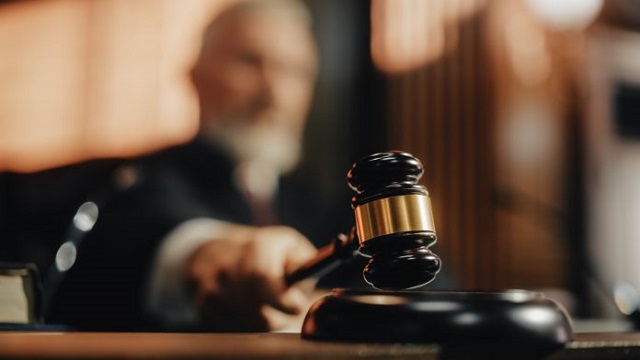
 Opinion2 days ago
Opinion2 days agoClimate Murder? Media Picks Up Novel Legal Theory Suggesting Big Oil Is Homicidal
-
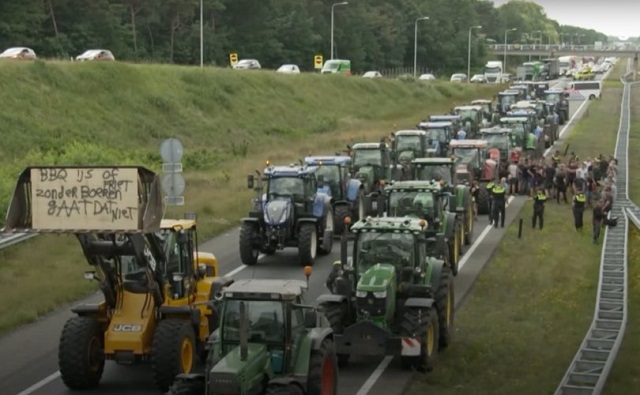
 Energy1 day ago
Energy1 day agoNet Zero’s days are numbered? Why Europeans are souring on the climate agenda
-
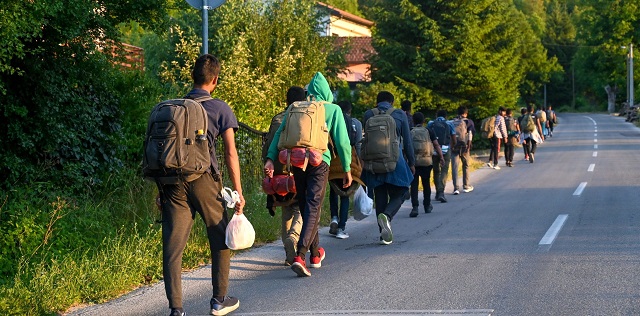
 illegal immigration5 hours ago
illegal immigration5 hours agoBiden’s DOJ Threatens To Sue Another State For Enforcing Immigration Law
-
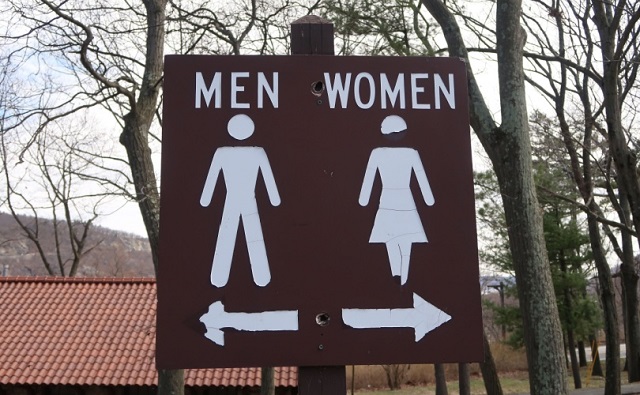
 Opinion1 day ago
Opinion1 day agoQuebec’s ban on gender-neutral bathrooms in schools is good news
-

 International15 hours ago
International15 hours agoTrump campaign says he will pardon Jan. 6 prisoners on ‘case-by-case basis’ if re-elected
-

 Energy1 day ago
Energy1 day agoBiden Has Taken More Than 200 Actions Against Domestic Oil, New Report Says
-
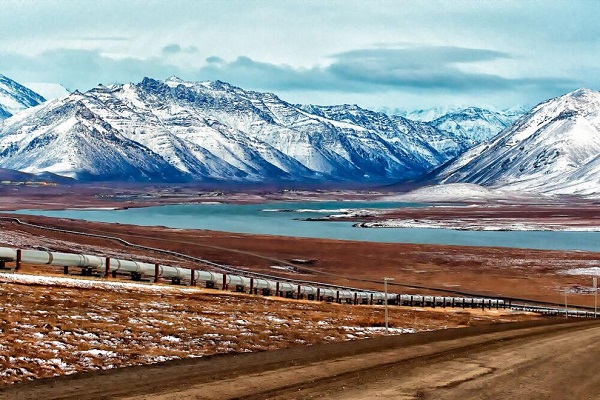
 Energy2 days ago
Energy2 days agoHouses passes bill to protect domestic oil production, protect Iñupiat community
-

 Economy4 hours ago
Economy4 hours ago‘Gambling With The Grid’: New Data Highlights Achilles’ Heel Of One Of Biden’s Favorite Green Power Sources








